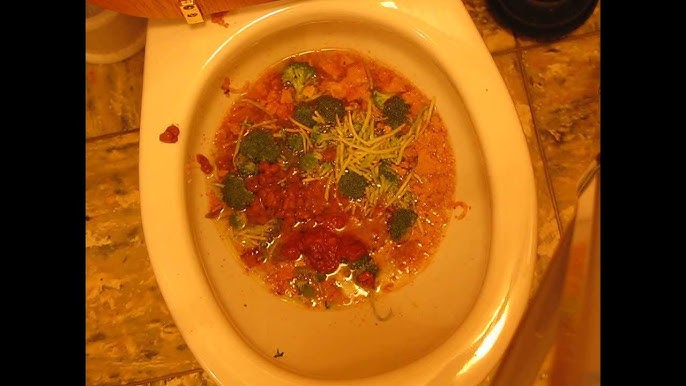Just how do you really feel in relation to Is it safe to flush food (especially rice) down the toilet??

Introduction
Many individuals are typically confronted with the dilemma of what to do with food waste, specifically when it comes to leftovers or scraps. One usual question that occurs is whether it's alright to flush food down the bathroom. In this article, we'll explore the reasons that people may consider purging food, the consequences of doing so, and alternate approaches for proper disposal.
Reasons people might think about flushing food
Absence of awareness
Some individuals might not recognize the prospective damage caused by flushing food down the toilet. They may wrongly think that it's a harmless practice.
Comfort
Flushing food down the toilet may appear like a fast and very easy option to disposing of unwanted scraps, specifically when there's no nearby trash bin readily available.
Negligence
In some cases, individuals might simply select to flush food out of large laziness, without thinking about the repercussions of their actions.
Repercussions of flushing food down the commode
Environmental influence
Food waste that winds up in rivers can contribute to pollution and harm aquatic ecosystems. In addition, the water used to purge food can stress water sources.
Pipes problems
Flushing food can lead to blocked pipes and drains pipes, causing pricey plumbing fixings and hassles.
Types of food that ought to not be flushed
Coarse foods
Foods with coarse structures such as celery or corn husks can get tangled in pipelines and cause obstructions.
Starchy foods
Starchy foods like pasta and rice can soak up water and swell, causing blockages in pipes.
Oils and fats
Greasy foods like bacon or food preparation oils need to never ever be purged down the bathroom as they can strengthen and create blockages.
Appropriate disposal approaches for food waste
Using a garbage disposal
For homes outfitted with garbage disposals, food scraps can be ground up and flushed via the pipes system. Nonetheless, not all foods appropriate for disposal in this fashion.
Recycling
Certain food product packaging products can be recycled, decreasing waste and lessening environmental influence.
Composting
Composting is an environment-friendly way to get rid of food waste. Organic materials can be composted and utilized to enhance soil for horticulture.
The relevance of appropriate waste monitoring
Minimizing environmental harm
Correct waste monitoring practices, such as composting and recycling, assistance minimize air pollution and maintain natural resources for future generations.
Shielding plumbing systems
By preventing the technique of flushing food down the toilet, home owners can avoid pricey pipes repairs and maintain the integrity of their plumbing systems.
Conclusion
Finally, while it might be alluring to purge food down the bathroom for comfort, it's important to understand the potential consequences of this activity. By adopting correct waste monitoring methods and taking care of food waste sensibly, individuals can add to much healthier plumbing systems and a cleaner atmosphere for all.
FLUSH FOOD DOWN THE TOILET?
FLUSHING FOOD CAN CAUSE BLOCKED DRAINS IN YOUR HOME
All of the plumbing fixtures in your home are connected to the same sewer pipe outside of your home. This outdoor sewer pipe is responsible for transporting all the wastewater from your home to the Council sewer mains. Even small pieces of food that go down the kitchen sink can cause problems for your sewer. It should therefore be obvious that flushing larger bits of food, such as meat, risks a clog in either the toilet itself or the sewer pipes. Flushing greasy food is even more problematic because oil coagulates when it cools, coating the interior lining of your pipes.
THE TOILET IS NOT A BIN
Food isn’t the only thing that people shouldn’t be flushing down the toilet. People use the toilet to dispose of all kinds of things such as tampons, makeup wipes, dental floss, kitty litter and even underwear. Water goes to great lengths to educate residents about the high costs and stress placed on wastewater treatment systems simply from people flushing the wrong stuff down the toilet. It costs taxpayers millions of dollars each year, and homeowners thousands in blocked drain repairs.
FLUSHING FOOD IS A WASTE OF WATER
Flushing food is a waste of our most precious resource - water. In June this year Level 1 water restrictions were introduced to protect water supply from drought conditions. Much of New South Wales continues to be affected by prolonged drought with recent figures revealing up to 97 per cent of the state remains in drought. Depending on whether you have a single or dual flush toilet, every single flush uses between five and 11 litres of water. In the current climate this is a huge amount of water to be wasting on flushing food that should be placed in the bin (or better yet, the compost).
https://www.jabplumbingsolutions.com.au/blog/can-you-flush-food-down-the-toilet

We were made aware of that editorial on Think Twice Before Flushing Food Down Your Toilet from a good friend on our other web page. Sharing is nice. You never know, you might be doing someone a favor. We truly appreciate your readership.
Call Today